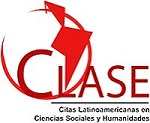The nature of the Innovation Processes and interaction between Economic Agents and the Innovation Policy
Keywords:
innovation process, interaction among agents, exploration and exploitation, innovation policyAbstract
It is fundamental to understand the essence of the innovation process. The public and private sectors need to progress in this regard in order to attain a better design and implementation of their innovation policies. The purpose of this document is to structure, concisely and logically, the main concepts and reasoning underlying the public policy that results from a better understanding of the innovation process and the necessary interaction among economic agents. This proposal incites to think of innovation as a result and as an activity, and to promote knowledge mobilization. It suggests boosting the “opening-up” to innovation in order to respect the diversity and the distribution of knowledge, to recognize the innovation unpredictability and to take advantage of the exploration and exploitation opportunities. The condensed and methodic exposition of the Innovation Policy Microfoundations aims to provide valuable elements to the theoretical debate but also to policy makers’ controversy.Article Metrics
Abstract: 893 PDF (Español (España)): 287References
ANTONELLI, Cristiano y SCELLATO, Giuseppe. (2011). Complexity and Technological Change: Knowledge Interactions and Firm Level Total Factor Productivity. En Working Paper Series. Università di Torino. W.P. No. 02/2011
BORRÁS, Susana. (2003). The Innovation Policy of the European Union. From Government to Governance. U.K.: Edward Elgar Publishers..
CHAMINADE, Cristina y EDQUIST, Charles. (2006). From Theory to Practice. The Use of the Systems of Innovation Approach in Innovation Policy. En: Hage, J. y de Meus, M. (ed.), Innovation, Learning and Institutions. Oxford: Oxford University Press.
CIMOLI, Mario y Dosi, Giovanni. (1994). De los Paradigmas Tecnológicos a los Sistemas Nacionales de Producción e Innovación”. En: Revista Comercio Exterior. No8. México: Bancomext.
EDQUIST, Charles. (2008). Design of Innovation Policy through Diagnostic Analysis: Identification of Systemic Problems (or Failures). CIRCLE. Lund University, WP 2008/06.
EDQUIST, Charles. (2001). Innovation Policy – A Systemic Approach. En: Archibugi, D.y Lundvall, Bengt-Ake (eds.). The Global Learning Economy. USA: Oxford University Press.
EDQUIST, Charles y HOMME, Leif. (2008). Small Country Innovation Systems Globalization, Change and Policy in Asia and Europe. Cheltenham, UK: Edward Elgar
FAGERBERG, Jan, FOSAAS, Morten y Sapprasert, Koson. (2012). Innovation: Exploring the Knowledge Base. En: Research Policy. Doi:10.1016/j. respol.2012.03.008
GARCÍA, Alejandro. (2007). Alianzas Estratégicas y Mecanismos de Coordinación. Una Síntesis de las Aportaciones de Nooteboom a la Teoría de la Empresa. En: Taboada, Eunice (coord.). Hacia una Nueva Teoría de la Empresa. Elementos desde la Economía Institucional Contemporánea. México: Ediciones Eón-UAM-A y UAM-C.
HOMMEN, Leif y EDQUIST, Charles. (2008). Concluding Chapter: Globalization and Innovation Policy. CIRCLE, Lund University.
Industrial and Corporate Change. (2011). Special Section: Building Innovation Systems. Vol.20. No.6.
JOHNSON, Bjorn y LUNDVALL, Bengt-Ake. (1992). Closing the Institutional Gap?. En Reveu d´économie industrielle. Vol.59.
LARA, Juan y BERMÚDEZ, Jaime. (2011). Perspectiva de la Política de Innovación y su Monitoreo en la Unión Europea, 2010-2020. En: Finanzas y Economía. Vol.3. No.2. Julio-Diciembre.pp.105-126
MURAKAMI, Teruyasu y NISHIWAKI, Takashi. (1993). Estrategia para la Creación. México: Panorama.
NERI, Juan. (2012). Diseño de una agenda estratégica para consolidar la cooperación interinstitucional como un mecanismo para promover la competitividad. En: Martínez, Adriana, De Gortari, Gabriela, Vesuri, Hebe y Vega, Antonio (coords.). Apropiación Social del Conocimiento y Aprendizaje: Una Mirada Crítica desde Diferentes Ámbitos. Coedición
CONCYTEG y Plaza y Valdés.
NONAKA, Ikuhiro y TAKEUCHI, Hirotaka. (1999). La Organización Creadora de Conocimiento. Oxford University Press.
NOOTEBOOM, Bart. (1992). Towards a Dynamic Theory of Transactions. En: Journal of Evolutionary Economics. No2.
NOOTEBOOM, Bart. (1999). Innovation, Learning and Industrial Organization. En: Cambridge Journal of Economics. Vol.23.
NOOTEBOOM, Bart. (2000a). Learning and Innovation in Organizations and Economies, U.K. Oxford University Press.
NOOTEBOOM, Bart. (2003). Managing Exploitation and Exploration. En: Rizello, Salvatore (ed.). Cognitive Developments in Economics. London: Routledge.
NOOTEBOOM, Bart. (2004a). Inter-organizational Collaboration, Learning and Networks. An Integrated Approach. London: Routledge.
NOOTEBOOM, Bart. (2006b). Beyond Penrose: A cognitive theory of the firm. Discussion Paper. Tilburg University. Center for Economic Research.
NOOTEBOOM, Bart. (2006a). Organization, Evolution, Cognition and Dynamic Capabilities. Draft.
NOOTEBOOM, Bart. (2004b). Governance and Competence, How can they be Combined? En: Cambridge Journal of Economics, 28(4).
NOOTEBOOM, Bart y Stam, Erik. (2008). Micro-foundations for Innovation Policy. Amsterdam: Amsterdam University Press.
NOOTEBOOM, Bart y Went, Robert. (2008). Innovation and Organization. En Nooteboom, Bart y Erik Stam (eds). Micro-foundations for Innovation Policy. Amsterdam: Amsterdam University Press.
NOOTEBOOM, Bart. (2009). A Cognitive Theory of the Firm. Learning, Governance and Dynamic Capabilities. UK: Edward Elgar, Cheltenham.
OECD. (2004). Science and Innovation.
OECD. (2005). Manual de Oslo.
OECD. (2010). The OECD Innovation Strategy: Getting a Head Start on Tomorrow
OECD. (2011). Science, Technology and Industry Scoreboard.
OECD. (2012). Science, Technology and Industry Outlook.
PÉREZ, Carlota. (2012). Innovation System and Policy: not only for the rich?. En: Technology Governance. Working Papers in Technology Governance and Economic Dynamics. No. 42.
RAISCH, Sebastian, BIRKINSHAWN, Julian, Probst, Gilbert y Thusman, Michel. (2009). Organizational Ambidexterity: Balancing Exploitation and Exploration for Sustained Performance”. En: Organization Science. Vol. 20. Nº 4.
SOUZA, Leonardo y VILLAVICENCIO, Daniel. (2011). Redes de Innovación: Una Revisión desde la Perspectiva de Construcción de Indicadores de CTI. En: Villavicencio, Daniel, Martínez, Adriana y López de Alba, Pedro. (coords.). Dinámicas Institucionales y Políticas de Innovación en México. Coedición CONCYTEG, UAM-Xochimilco y Plaza y Valdés.
STAM, Erik y NOOTEBOOM, Bart. (2011). Entrepreneurship, Innovation and Institutions. Discussion Papers Series: 11-03. Universiteit Utrecht, Netherlands.
TABOADA, Eunice y CANALES, Rosa. (2009). Especialización y Complementariedad Cognitivas: ¿Qué Riesgos Implican y Cómo Pueden las Empresas Controlarlos? En: Sánchez, Alfredo (coord.). Economía Teórica y Aplicada. México y el Mundo. Colección Seminario de Economía. División de Ciencias y Humanidades de la UAM-A. México: Ediciones Eón.
TABOADA, Eunice y GARCÍA, Alejandro. (2010). Teoría Cognitiva de la Empresa. En: Revista Electrónica Ide@s CONCYTEG. 5(58).
TABOADA, Eunice. (2011). Particularidad de la Política que deriva del Enfoque de los Sistemas de Innovación en su Estado Actual. En Martínez, Adriana, García, Alejandro y López de Alba, Pedro (coords.). Innovación, Transferencia de Tecnología y Políticas: Retos y Oportunidades. México: Plaza y Valdés Editores y CONCYTEG.
TORRES, Arturo, Dutrénit, Gabriela, Becerra, Noé y Sampedro, José. (2011). Factores Determinantes de la Vinculación Academia-Industria. En: Villavicencio, Daniel, Martínez, Adriana y López de Alba, Pedro. (coords.). Dinámicas Institucionales y Políticas de Innovación en México. Coedición CONCYTEG, UAM-Xochimilco y Plaza y Valdés.





















